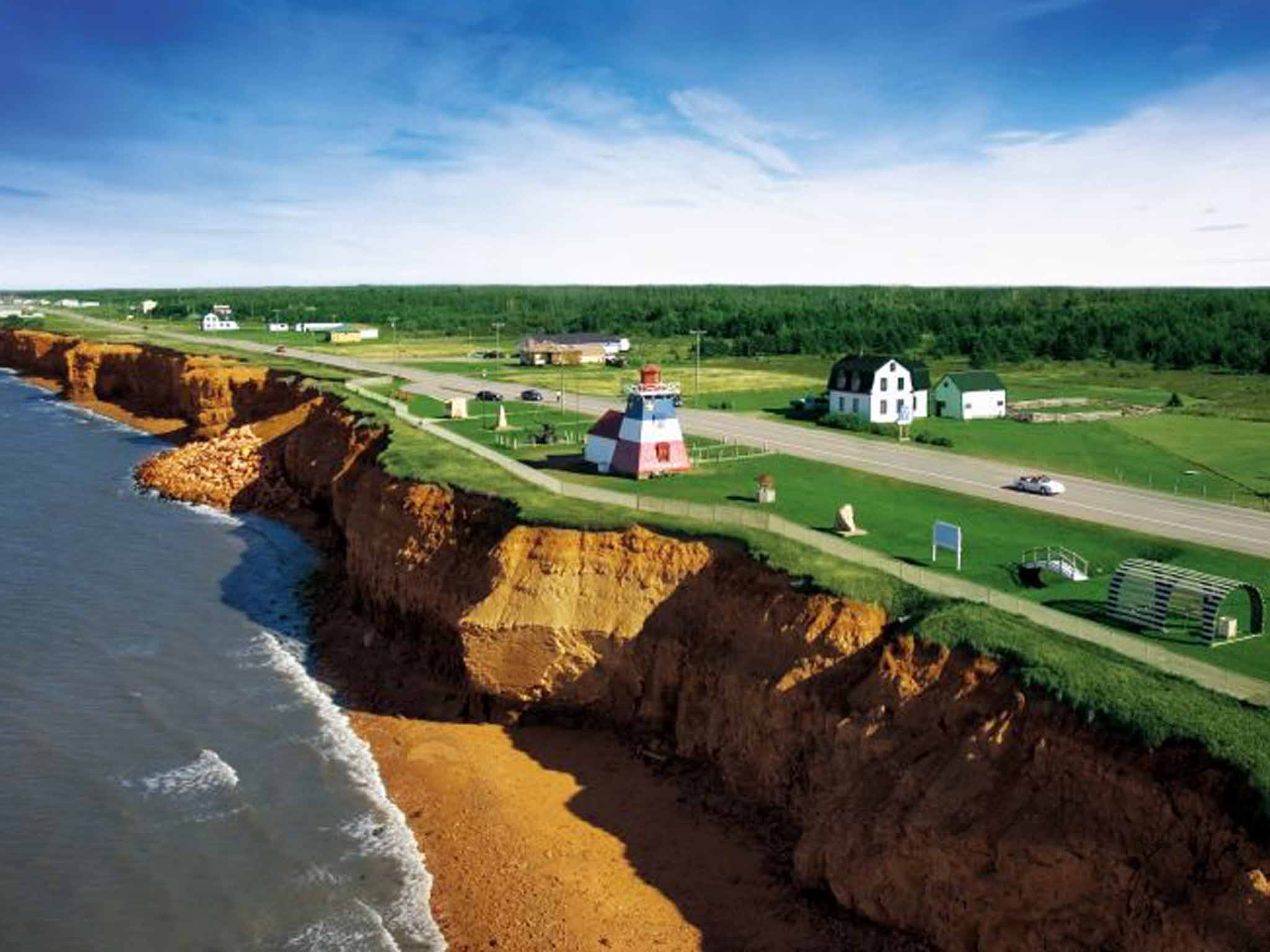The Independent's journalism is supported by our readers. When you purchase through links on our site, we may earn commission.
Exploring Atlantic Canada: New links are making the maritime provinces much more accessible
New flights are making Newfoundland, Nova Scotia, New Brunswick and Prince Edward Island easier – and cheaper – to reach, writes Simon Calder

North America is getting closer – or at least that is how it seems this summer, with the nearest territories to the UK gaining crucial links.
A new low-cost flight from Glasgow to Nova Scotia's capital, Halifax, together with a year-round service from Heathrow to St John's in Newfoundland, have made Canada's maritime provinces much more accessible. With sterling breaking the two-Canadian-dollar barrier for the first time in seven years, 2015 is the ideal year to visit a friendly, intriguing and beautiful region that is no longer such a long and expensive haul. Just be prepared to organise the trip for yourself – while plenty of UK tour operators feature Canada, few offer organised holidays in the maritime provinces.
New-found opportunity
St John's, the Newfoundland capital, offers the quickest transatlantic crossing from the UK. Air Canada (0371 220 1111; aircanada.com/uk) flies from Heathrow, with August returns around £750.
St John's occupies a beautiful bay, with superb coastal hikes. It presides over the old Colony of Avalon, founded in 1720. This was where European settlers – many of them Scottish and Irish – first took root. In a week you can explore the glorious Avalon Peninsula, from Cape Spear (close to St John's) to the remote Cape Race lighthouse and radio station, from where the first messages from the stricken Titanic were received in 1912.
A new Scotland
Nova Scotia's Cape Breton Island has the same breathtaking landscapes and Highland culture as Scotland – with the benefit of being 10 degrees nearer the equator. The Cabot Trail is named after the first documented transatlantic traveller to reach Canada's maritime provinces (though the Vikings and Basque fishermen had landed before John Cabot turned up in 1497). The trail is a superb drive, sweeping through Cape Breton Highlands National Park and offering dramatic coastal vistas. An excellent place to stay is Port Hood, on the west coast, which boasts "the warmest waters north of the Carolinas".
Lighthouse Cottages (001 902 787 3345; lighthouse-cottages.com; C$160/£80 per night) are perched above the long beach, which you reach across flower-strewn dunes. Each sleeps four and offers views across to another maritime province, Prince Edward Island.
Green and pleasant
"Almost before anybody realised it, spring had come… and the 'mist of green' was on the woods and in the valleys." The main draw of Canada's smallest province, Prince Edward Island, is the story of Anne of Green Gables. Lucy Maud Montgomery's 1908 novel about an orphan girl mistakenly sent to help on a farm now attracts thousands to the serene rural landscapes and seascapes. The beach village of Cavendish is the centre of the "gable network", but PEI offers much more besides – in particular dreamy, dune-strewn shores, succulent seafood and an extraordinary "rail trail". In 1989, the island's railway network was closed, but the 250 miles of lines have been adapted to a walking and cycling trail (islandtrails.ca).
Welcome to Acadia
When French migrants arrived in Atlantic Canada early in the 17th century, they named it Acadie – broadly comprising present-day Nova Scotia, Prince Edward Island and New Brunswick – which today has a 450-mile Acadian Coastal Drive.
Along the way you learn about Le Grand Dérangement, the deportation by the British of the Acadian people that began in 1755. This attempt at ethnic cleansing was unsuccessful; New Brunswick is Canada's only officially bilingual province. Find out more at Le Pays de la Sagouine (001 506 473 1400; sagouine.com), a cultural hub at Bouctouche – between the cities of Miramichi and Moncton.
Tidings of joy
The Bay of Fundy, between New Brunswick and Nova Scotia, has the highest tides in the world, with 100 million tons of water flowing in and out twice a day. These are impressive when viewed from the shore, but they also offer the chance to go rafting on a tidal bore. The Shubenacadie river is the best place to witness the wave, and rafters experience the extreme turbulence that accompanies the phenomenon. A two-hour trip on a Zodiac boat costs C$80, and includes the chance to swim upriver as the tide carries you inland (001 800 856 5061; tidalborerafting.com).
Access to Nova Scotia became much more affordable this summer, with WestJet (westjet.com) offering cut-price no-frills services from Glasgow to the fine city of Halifax.
Subscribe to Independent Premium to bookmark this article
Want to bookmark your favourite articles and stories to read or reference later? Start your Independent Premium subscription today.

Join our commenting forum
Join thought-provoking conversations, follow other Independent readers and see their replies